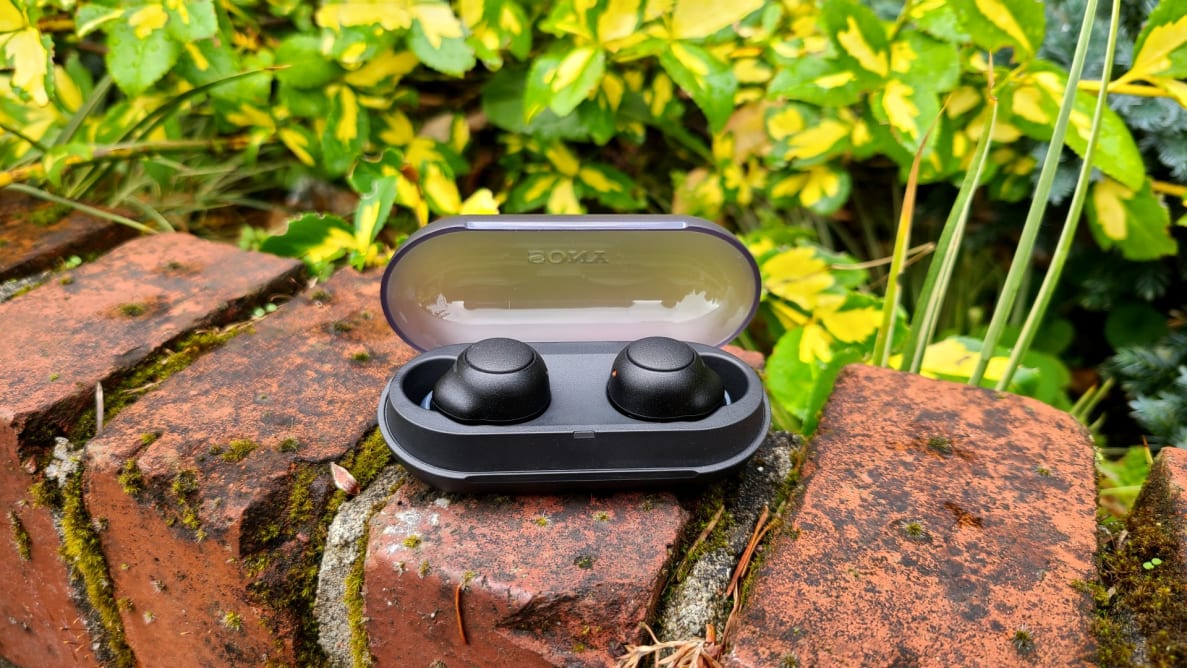Pros
-
Stylish, comfy design
-
10 hours of playback time
-
Good instrumental separation
Cons
-
Minimal features
-
Sound can be too bright
-
No transparency or ANC modes
About the Sony WF-C500 wireless earbuds
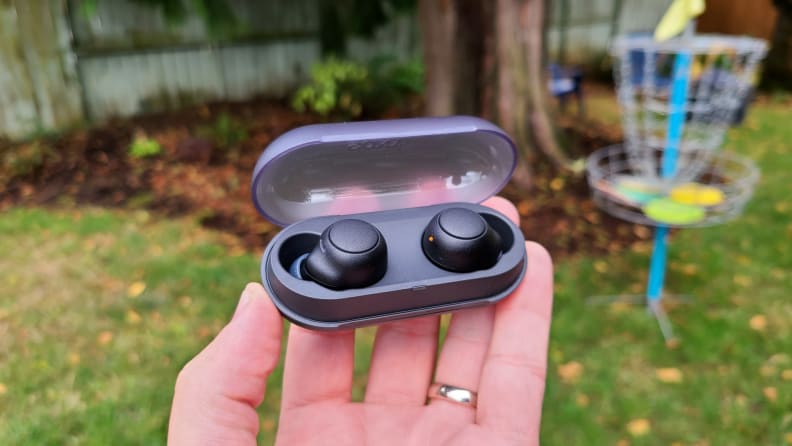
Sony's WF-C500 are the brand's entry-level true wireless earbuds.
- Price: $99.99
- Battery life: Up to 10 hours of playtime, one extra charge in the case
- Rapid charging: 10 minutes for 1 hour of playtime
- Wireless charging: No
- Ambient sound modes: None
- Colors: Black, White, Green, Orange
- Connectivity: Bluetooth 5.2
- Sensors: None
- Audio codecs: AAC, Sony DSEE
- Dust/water resistance: IPX4
- Fit: 3 ear tips sizes
- Weight: 5.7 grams per bud, 34 gram case
The pint-sized earbuds show up in a tiny box with a quick guide on the interior flap and directions to download Sony’s Headphones Connect app. Inside you’ll find the small, rounded buds seated within a gel-cap translucent case. Accessories include a small USB-C-to-USB-A cable and two extra pairs of silicone eartips. The app walks you through all major features and fit, and the buds are ready to pair automatically once you’ve removed them from the case. This includes one-tap Google Fast Pair for Android phones and Microsoft Swift Pair.
What we like
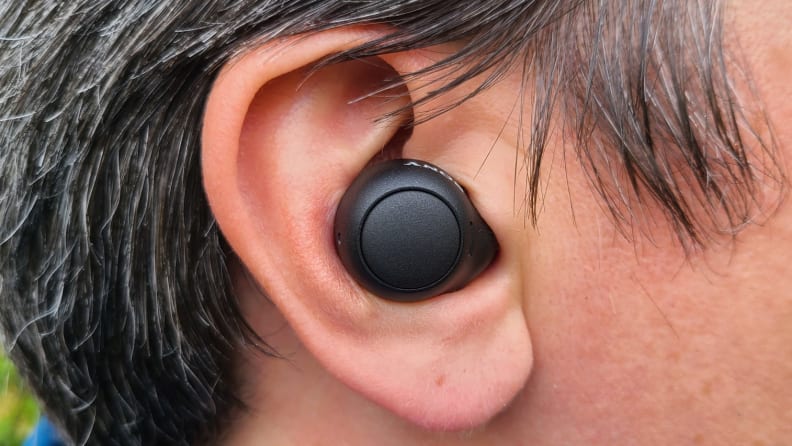
The fit is snug and relatively comfy, while styling is understated with a dash of flash.
Comfy, stylish, micro-sized design
To be frank, my first impression of the WF-C500’s case was that it looks a little cheap—these are budget buds, after all, and the frosted top has a toyish quality. Once you pry past the over-tight hinges, though, the case’s angled base gives a futuristic feel, and the buds themselves are small and shapely, reminiscent of a Bond gadget.
The rounded buds are impressively light, with real control buttons that press with the kind of ease that made me switch my preference from touchpad to tactile. Looking more closely, little flecks along each bud’s plastic exterior shimmer in the light for an overall impression of a well-built pair. The ergonomic design makes for a tight fit that’s easy to wear for hours (provided your ears conform to the small/medium/large ear tip template), and IPX4 water resistance gives them some solid protection from the elements.
Next-gen playback time
Sony’s last pair of earbuds at this tier, the gauge-sized WF-XB700, offered a still-impressive 9 hours of playback time, and the WF-C500 top that with 10 full hours. It’s an impressive number in any light, and in my testing I was able to push the earbuds even a bit further, though I started getting warnings to charge at around 20%, or just past 9 hours or so. Sony says you may get a bit less if you use EQ or the Digital Sound Enhancement Engine (DSEE) for improved sound performance.
Of course, with true wireless earbuds, playback time is only half the story when it comes to outlet-free fun. The fact that the C500’s case allows for just a single full charge actually gives these buds less time on the go than most similarly appointed offerings, from Apple’s standard AirPods to Jabra’s $80 Elite 3. It’s still a ton of playback time per charge, but with an asterisk.
Easy controls (including onboard volume)
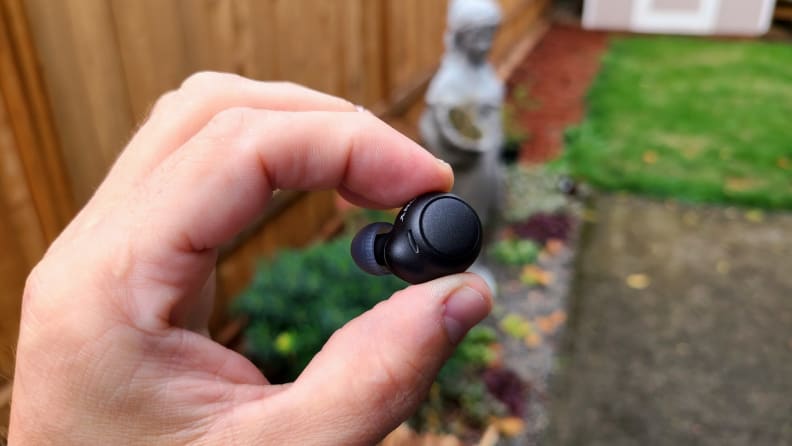
A single button on each side controls playback, calling, voice assistant summoning, and volume.
The WF-C500’s controls are relatively basic—simple controls for simple buds. Tapping the right button handles all playback options (play/pause, song skip, and calling) while a hold calls up your voice assistant. The left bud provides volume control: tap to raise volume, hold to lower it. That’s it. There’s no need to worry about customizing because you can’t. And since there’s no form of transparency mode or noise canceling, the left bud gets off easy.
Still, onboard volume control is one of the most convenient wireless earbuds features, and a surprising number of buds don’t offer it without swapping another function, while some offer no way to do it at all (ahem, Apple).
Excellent detail and instrumental separation
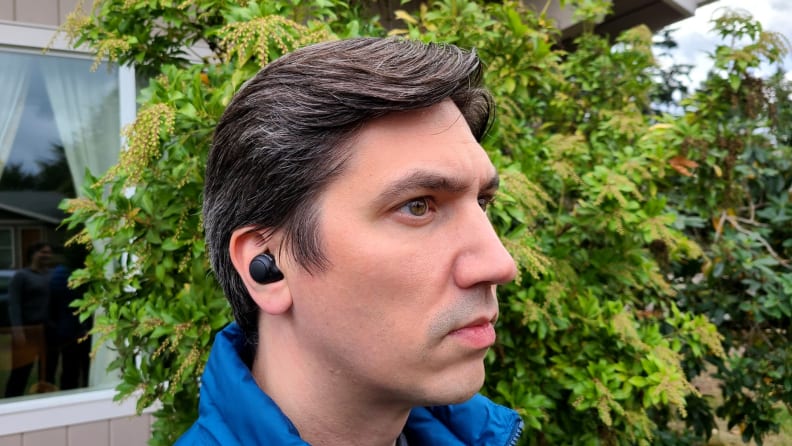
The sharper sound makes room for lots of detail and clear stereo spacing.
The WF-C500 offer a uniquely styled sound signature that is much brighter than expected, especially in the midrange. I’ll get into the cons of that in a moment, but one benefit here is these buds really know how to carve out the instruments into detailed corners of the soundstage.
Whether it’s an ‘80s pad synth, a raspy saxophone, or an acoustic guitar, your ears are free to explore the sonic space, and you’ll rarely lose track of any sonic component to masking or distortion. There’s good detail here, too, allowing you to hear subtle nuances like picks clicking against guitar strings or brushes polishing a snare.
As for call quality, there are no apparent exterior microphones for wind-buffering outdoors, but I had no major distortion or other troubles with basic calls indoors.
What we don’t like
The brash sound signature can wear on the ear
On the flip side of the WF-C500’s excellent instrumental clarity is the fact that these suckers are more taut, strident, and in some cases sharp than I’d like. Just as some bass-heavy buds rewrite your favorite tracks with a healthy side of boom, these bring a jangly reflection to everything they touch that, even after prolonged exposure, never really settled in.
For serious music lovers, this means your Fender Stratocasters sound more like Telecasters. Acoustic guitars ring with a bit more banjo. And mandolins sound more like dulcimers. If you’re not up on your instrumentation, suffice it to say that everything you hear will be lighter, with less body and more “zing” than usual.
For example, Paul McCartney’s “Maybe I’m Amazed” was rendered with impressive detail. The chorus-y “chunka-chunk” guitar behind the main melodic structure in the middle of the song sounds particularly clear and present, with a pointed click to the attack that’s interesting. But the ripping solo that follows is sharper and tinnier than expected, and even the snare tapping time is too bright, as if it’s been squashed into a toy drum.
Sibilant vocals or podcasts have even more trouble, occasionally pushing to a sharpness that left me reaching for the volume. You can adjust the EQ in Sony’s app, and the Mellow preset helps, but it also takes away a lot of the clarity and detail. It’s not something that’s overly troublesome, and less picky listeners may not even notice, but it’s also not as accessible or balanced as you’d expect from Sony, as if it's an overcorrection from the brand's bassier buds.
Where are all the features?

The feature list is surprisingly bare, lacking even auto-pause or transparency mode.
Sony’s Headphones Connect app is a passport to a cornucopia of options with Sony’s pricier headphones, such as the aforementioned WF-1000XM4 or the SP800N, allowing you to do everything from customizing controls to setting up automated status to adjust features like transparency mode and active noise canceling based on your daily routine.
So it’s a bit of a comedown to see how little you can do with the WF-C500. There are some nice options like a multi-band EQ and presets (though there’s only so much you can do with the sound signature), Sony's 360 Reality Audio system (when paired with services like Tidal), and the ability to adjust Sony’s DSEE engine to trade battery life for slightly increased performance. There are also some good physical options, like the ability to use one bud at a time. But what’s missing here could give you some earbud FOMO (that’s still a thing, right?).
You don’t get ANC, of course. That’s not a surprise at this price, but the way things are going it’s going to be soon, and you can find plenty of options at or around this price that have it. What is surprising is that, unlike most earbuds we see at this level, there’s also no transparency mode. In other words, there are no exterior microphones to pipe in ambient audio to keep you aware while running or walking your dog.
Also missing are features like an earbuds finder, the ability to customize controls, sensors for auto-pause, or wireless charging for the case. Some of these are bigger issues than others but, to borrow a line from James Bond in Skyfall, it’s not exactly Christmas, is it?
Base case
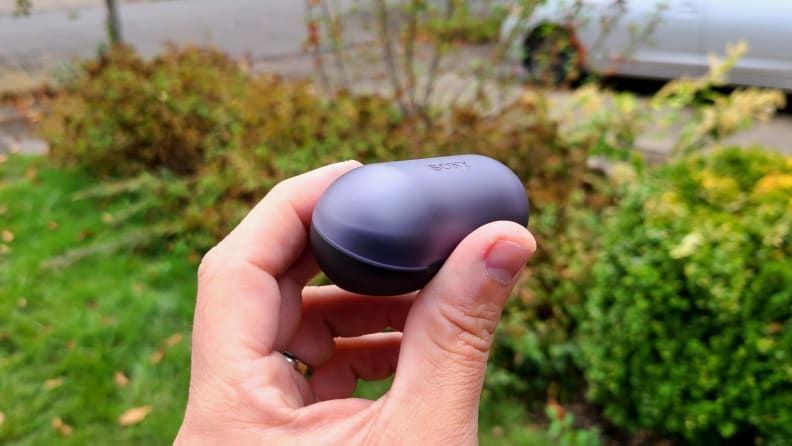
While playback time is excellent, only one charge in the case means less total battery than most competitors.
It’d be easier to forgive more of the WF-C500’s omitted features if the case was a bit more on the level. It’s certainly slim, and while the lid is a little flimsy feeling, it seems robust enough for long-term wear and tear. The main problem is you only get one extra charge out of the case, good for about 20 hours total. Even with the buds' beefy battery life, that’s less total playtime than most competitors when combined.
The per-charge battery life is arguably the C500’s best feature, but this takes some of the wind out of those sails. And, really, are you going to be listening to these buds for more than 6-7 hours at a time in any regular scenario? On the bright side, you do get basic quick charging for an hour of playtime on 10 minutes charge, so you can top them off quickly if you ever do drain them completely.
Should you buy them?
Only if you really want Sony buds on a thin dime
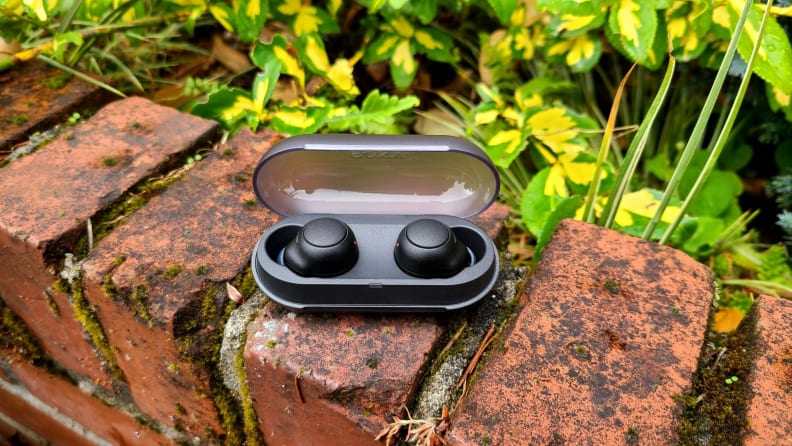
Sony's earbuds are compact and stylish, but they're not the best value in the space.
Sony’s WF-C500 earbuds are respectable, if a bit underpowered. They offer next-gen playback time, their sound is detailed (if brash), and their compact, rounded design looks and feels stylish and comfortable in equal measure. But here’s the thing about true wireless earbuds these days: there are far too many of them for you to settle, even at this price.
Want to spend less and get more? Jabra’s Elite 3 offer better overall battery (7 hours of playtime per charge, 28 hours with the case), transparency mode, and higher dust and water resistance for $80. They also sound great. Want ANC? You can get solid noise canceling for $20 more than Sony’s pair from Amazon’s Echo Buds (gen 2), not to mention tons of other options, including pairs that often sell below $100 like Soundcore’s Liberty Air Pro 2. Even Samsung’s fabulous Galaxy Buds 2 can sometimes be found for $120, bringing fresher style and way more features than Sony’s pair.
If you got Sony's WF-C500 for Christmas, you’d probably be a happy enough camper. But until the price drops a bit, you can do a fair bit better for your 100-ish dollars elsewhere. And the competition is only getting stronger.
Meet the tester
Hailing originally from Montana, Ryan parlayed his time working as a musician and audio engineer into a career in digital media in 2012. Since then he's had extensive experience as a writer and editor, including everything from op-eds and features to reviews on TVs, audio gear, smart home devices, and more.
Checking our work.
Our team is here to help you buy the best stuff and love what you own. Our writers, editors, and experts obsess over the products we cover to make sure you're confident and satisfied. Have a different opinion about something we recommend? Email us and we'll compare notes.
Shoot us an email